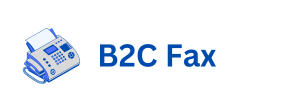In today’s digital marketing landscape, email remains one of the most powerful tools for engaging with potential customers. However, building a high-quality email list from scratch can be a time-consuming and costly process. This is where purchased email lists come into play. When used correctly, a purchased email list can be an effective way to jumpstart your marketing efforts, broaden your reach, and drive sales. Below, we will explore how to use purchased email lists for effective marketing campaigns.
1. Understanding Purchased Email Lists
A purchased email list is a collection of email addresses compiled by third-party providers, often segmented by factors such as industry, location, job title, or other demographics. These lists are typically sold for a fee, and they give marketers access to a pool of potential leads that are relevant to their business. However, it’s important to understand that not all purchased email lists are created equal.
Before purchasing an email list, ensure that the provider offers high-quality, up-to-date, and legally obtained data. Avoid buying lists that are old, poorly curated, or come from dubious sources, as they may lead to high bounce rates or even legal issues if they violate privacy laws like GDPR or CAN-SPAM.
2. How to Segment Purchased Email Lists
Segmentation is one of the key strategies for maximizing the effectiveness of your email marketing campaign. When you purchase an email list, you don’t have to treat all contacts the same. In fact, segmentation is essential to deliver targeted, relevant content to your audience. Segmentation can be based on several factors such as:
- Demographics: Age, gender, income level, education, etc.
- Industry/Profession: Tailor messages based on the specific industry or job role of your contacts.
- Geography: Location-based segmentation can help you send location-specific offers or promotions.
- Past Engagement: If the list provider has information on prior engagement (e.g., previous purchases or website visits), you can tailor your messages accordingly.
By segmenting your purchased email list, you can create personalized and relevant campaigns that will increase engagement rates, reduce unsubscribe rates, and improve your overall return on investment (ROI).
3. Crafting Targeted and Engaging Content
Once you have segmented your email list, it’s time to create targeted and engaging content. A generic, one-size-fits-all approach will not yield the best results. Personalization is key to driving higher open rates, click-through rates, and conversions. Here’s how you can create compelling content:
- Personalized Subject Lines: Using the recipient’s name or referencing their specific needs in the subject line can increase the chances of your email being opened.
- Relevant Offers: Based on your segmentation, make sure your email offers products or services that match the recipient’s needs. If you are targeting businesses, offer them a B2B solution; if you’re targeting consumers, offer consumer-focused products.
- Clear Call-to-Actions (CTAs): Your email should have a strong CTA that encourages the recipient to take action, whether it’s making a purchase, downloading a resource, or scheduling a consultation.
- Visually Appealing Design: A clean and visually appealing email design can make your message stand out. Ensure it’s mobile-friendly as many users check emails on their phones.
By crafting targeted, engaging content that resonates with each segment, you increase the likelihood that your email will not only be opened but acted upon.
4. Best Practices for Using Purchased Email Lists Responsibly
Using purchased email lists can be a highly effective marketing strategy, but it also comes with a set of responsibilities. It’s crucial to follow best practices to avoid legal pitfalls, maintain a good sender reputation, and keep your email list healthy. Here are some best practices to follow:
- Get Permission: Even though you’re using a purchased list, it’s best practice to get explicit consent from the recipients before sending them marketing emails. A double opt-in process is a good way to ensure that your emails are welcomed and not considered spam.
- Comply with Legal Regulations: Adhere to email marketing laws such as CAN-SPAM, GDPR, and other privacy regulations. Always include an unsubscribe option and honor opt-out requests promptly.
- Clean Your List Regularly: Regularly clean your email list to remove inactive, bounced, or unsubscribed addresses. This will help maintain your deliverability rates and protect your sender reputation.
- Monitor Campaign Performance: Track the performance of your email campaigns through open rates, click-through rates, and conversion rates. This will help you refine your strategies and improve the results of future campaigns.
By adhering to these best practices, you’ll maximize the effectiveness of your purchased email list while minimizing risks.

